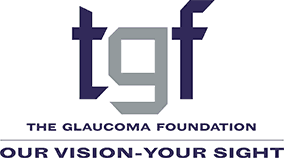~Doctor, I Have a Question. I was just diagnosed. What are my treatment options today?~
Question answered by:

Traditionally, people always thought of glaucoma treatment as eyedrops. Today there are a lot more options that we can offer to our patients. That’s why an early and accurate diagnosis is so important – because that’s where you can modify the course of the disease with all the options now available. The earlier you are in the disease course, especially with mild to moderate disease, the more options there are. Patients need to know that it’s perfectly reasonable to talk to their eye care professional about that.
Drops are still the first line of therapy. There are multiple modes of action for the different types of drops out there and they all work very well. In general, the first line of defense tends to be a prostaglandin. “Polypharmacy,” where patients are prescribed several different drops (usually more than two), taken several times a day, is being used less today because the more you have to take drops, the more likely you are to forget and your chances of compliance are less than 70 percent.
Therefore, other options, such as selective laser trabeculoplasty (SLT), are a wonderful option for people who have POAG, (primary open-angle glaucoma), the most dominant form of glaucoma. A landmark study a couple of years ago reported that in many parts of the world SLT is offered as a first-line therapy. Here in the U.S., it’s offered usually after one or more drops but much of this depends on the discussion between the patient and physician; some patients may opt for it first-line versus the trouble of using a drop daily.
Today, there are different MIGS (minimally invasive glaucoma surgeries) that we offer to our patients in their glaucoma treatment journey. In addition to being used in conjunction with cataract surgery, some MIGS can be used as stand-alone surgeries– even 15-20 years before cataract surgery is necessary. We are very excited about that. Most MIGS are covered by insurance. So, patients have the choices of (1) drops – there are newer action drops and different combination drops out there; there are (2) lasers; and now we have (3) MIGS. In the pipeline, there are companies working on some drops with new mechanisms of action, new MIGS procedures, and newer lasers that may affect areas of the eye — like the trabecular meshwork – that impact glaucoma.
Of course, if a patient is diagnosed with end-stage glaucoma, or near end-stage glaucoma, then the options are limited. Perhaps the first-line drop, the laser, and some of the MIGS won’t work as well and more traditional incisional surgery, such as a trabeculectomy, or tubes for draining the eyes are necessary –which is why it’s so important to get diagnosed early.
I’m very bullish about the therapies for glaucoma overall. Eye pressure is still the only way we can diagnose glaucoma. With a newly diagnosed patient, we check eye pressure a couple of times a year in the morning and a couple of times a year in the afternoon due to variations based on the time of day. And then we very often start them off on a drop. If patients do not want to take drops, we can start them off with an SLT laser procedure – that’s a conversation between the doctor and patient. We do visual field tests as well, and OCT imaging, and sometimes an ERG retina/glaucoma test. At the beginning, we may do these tests more frequently just to chart the progression of the glaucoma.
If the tests show the glaucoma is stable, we’re good to go. If not, we add a drop or do a laser, or sometimes a stand-alone MIG. What’s most important is to talk to your eye care provider about your options. Understand what your options are for where you are. The journey of glaucoma can last for decades if you’re diagnosed early. It’s not a one-shot deal. It’s like any other disease. If you are going to have heart disease, don’t you want to know earlier? Don’t you want to know earlier with diabetes? Glaucoma is no different in that respect.
Jai G. Parekh, MD, MBA, FAAO, is a Clinical Associate Professor of Ophthalmology at The New York Eye & Ear Infirmary of Mt. Sinai
The Icahn School of Medicine, NY, a Senior Anterior Segment Eye Surgeon and
Co-Founder of EyeCare Consultants of NJ
